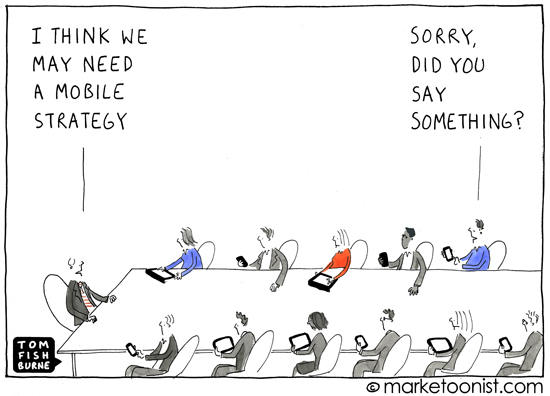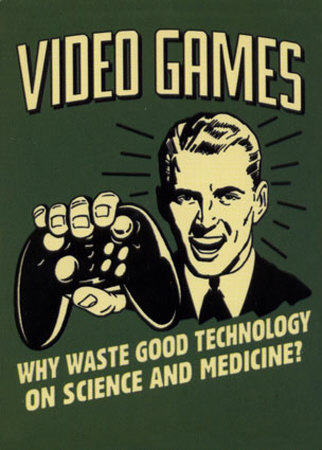Put down your iPhone for a second, we're strategizing here.
A prediction for 2012: There will be about 17,294 '2012 Predictions' blog posts and newsletter articles stressing the importance of mobile technology for workforce tools, marketing, branding, recruiting, gaming, training - you name it, chances are you will be warned that you'd better have a 'mobile strategy' for all of it.
And you better. So get on that now. And as the funny and apt cartoon from the Marketoonist reminds us, you might need to put down your toys for a few minutes while you sort that out.
Jokes aside, the correct approaches to mobile technology and the mobile-enablement of current workplace technologies probably present a set of challenges, (and certainly opportunities), unlike previous or last generation problems that needed to be solved.
Needed to make sure the time and attendance system met your needs? Well, since everyone used to report to the office, the process of badging or punching in was fairly simple. As long as the data was passed to the payroll system, you had most of your problem licked.
Today that same system and process might need to be supported on 5 mobile operating systems, on dozens of devices, and multiple languages. Not so simple for sure. And that doesn't even begin to touch upon the issues surrounding preferred usage styles and form factors on these devices, and just what workplace functionality should be mobile-enabled and what perhaps should not.
All in all, you will be told that in 2012 mobile will get even more important for getting work done, for engaging with employees, candidates, and customers; and for competing globally.
What you won't be told is that you'll need to sign off of Angry Birds and Flipboard for a few minutes to sort it out.
Wait, maybe we can build an Angry Birds extension that equates punching in at work to smashing a few pigs?

 Steve
Steve




